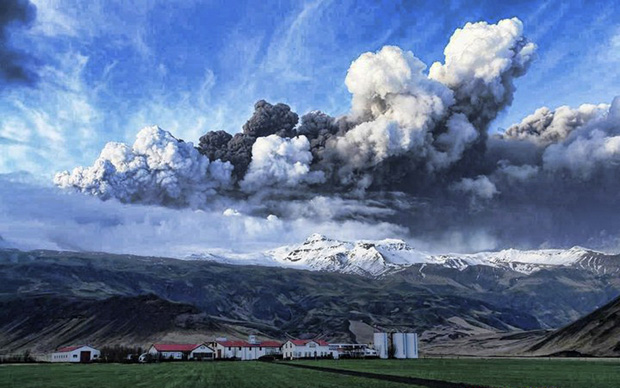|
An article looks at the positive benefits of ash to the nutrient cycle in the ocean... There are a few good papers on this, including Frogner, et al 2001 in Geology.
"By now, you may know that airborne ash from the volcano that erupted
through Iceland's Eyjafjallajökull glacier this past Wednesday is like
floating Kryptonite for airplanes. The ash clogs engines and threatens
aeronautic safety. And in the right concentrations, it can be bad for
both people and animals when
it lands.
The falling cinders—a mix of crushed rock, glass and some toxic
chemicals—are considered generally bad for the body. So what happens
when this particulate cloud of doom settles on the surface of the ocean?
You might picture it creating a floating blanket of poison that would
give the people at Ocean Conservancy cardiacs.
But does it?

A plume of volcanic ash rises into the
atmosphere from a crater under about 656 feet ice at the
Eyjafjallajokull glacier in southern Iceland April 14, 2010. A huge ash
cloud from the Icelandic volcano turned the skies of northern Europe
into a no-fly zone on Thursday, stranding hundreds of thousands of
passengers. Photo: Olafur Eggertsson/Reuters Well, according to several scientific studies, the ash could actually
be good for oceans.
|

